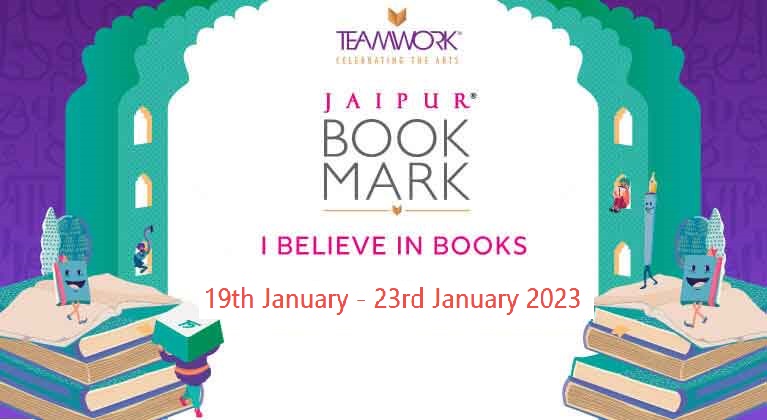by Ishan Roy

The Changing Face of Digital Narratives
Anu Singh Choudhary, Asma Khan, Jan Tompkins and Rohit Vedprakash in conversation with Vani Tripathi Tikoo
In an engrossing session presented by Goethe-Institut Max Mueller Bhavan, Anu Singh Choudhary, Asma Khan, Jan Tompkins and Rohit Vedprakash, in conversation with Vani Tripathi Tikoo, talked about the emergent possibilities provided by new genres of digital narratives. From the culinary universe to creating complex simulations of novelistic structures, the speakers gave thought-provoking insights on the advent of digital platforms in content generation and readership.
Actor and member of the CBFC, Vani Tripathi Tikoo, in her opening remarks talked about the innovative era of story-telling and the democratisation of content via web-platforms. She put forth an intriguing question to Rohit Vedprakash. He was asked to share his insights on how Netflix creates content. As the theatrical production consultant, Rohit emphasised that it was the relevance of content and its connect with the masses that created magic in web-based stories.
Asma Khan, British chef and celebrated restaurateur, talked about the essence of womanhood that she brought into her food, and stories that are shared across geographies. She rediscovered herself through the stories of the dadis and nanis of India who had traditionally not been given due credit for their cooking. She added that narrating the stories of these nameless and faceless people has been a humbling experience for her.
Creative Director Anu Singh Choudhary called this the best time to be a writer, with multiple opportunities to explore amid this transition from print to digital screens. With the advent of platforms like Netflix, the shared collaboration between these platforms and writers has become important like never before. Jan Tompkins added to that point by sharing his successful tryst with Instagram as a medium for story-telling. Tompkins is the supervisor of a virtual reality installation, placed right outside the Durbar Hall. The installation is a hub of intrigue for anybody wishing to gain an exciting experience of Franz Kafka’s novel, Metamorphosis, through VR.
Speaking on the resounding success of Vikram Chandra’s Sacred Games, Rohit Vedprakash shared that whenever a script comes to Netflix, it’s always evaluated on the character’s potential of leading the plot and not vice-versa. As books became the centre-piece of story-telling, the digital platforms found limitless dimensions, depth and liberty to play with the character and timings. The whole process of creating a digital narrative had made the writers insignificant and had started serving the story by providing justice to the characters.
For Jan Tomkins, the digital shift in story-telling is a new art-form in itself that can create a personalised experience for viewers. The power that tells the viewers what and how to see content, is adding a new dimension of reading experience. Rohit Vedprakash added that digital ‘personalised’ content had made it easier to bring audience, something which theatre could not do. The two factors responsible for this phenomena are the flexibility with the timings and the creative freedom that digital content brought to its audience. Not only did it cut the taboo associated with undiscussed subjects and social issues like motherhood, surrogacy or homosexuality but also developed several strong female protagonist characters along its way.
The panel discussion concluded on an empowering proposition stating that digital story-telling is going to become the true-facilitator of content with the cherished ideals of creative freedom without indulging into the biases of caste, creed, cuisine and religion.






